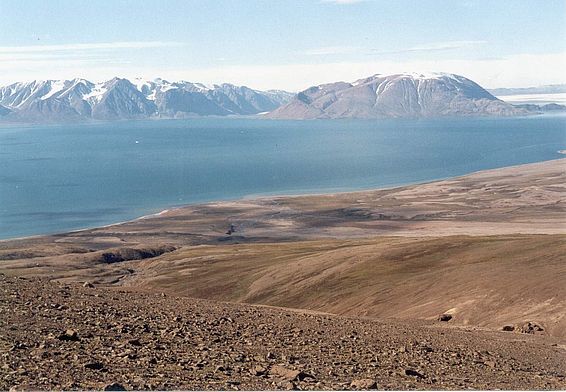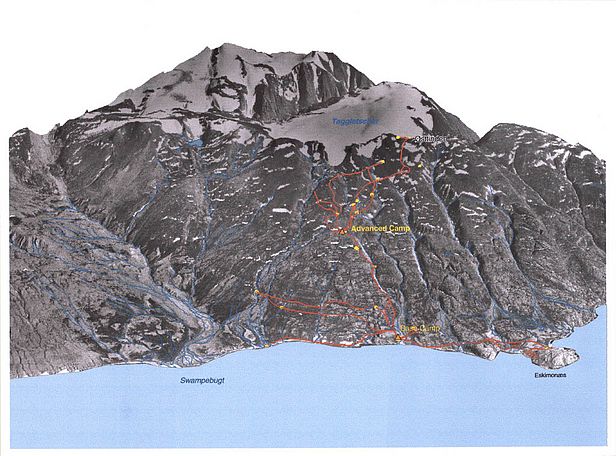SLF biologists are retracing two expeditions undertaken 20 and 90 years ago. Like their predecessors, they will be recording the plant populations they come across, and analysing how these have changed over recent decades. They expect this to provide new insights into the effects of climate change.
Biologists Christian Rixen and Andreas Gygax from the WSL Institute for Snow and Avalanche Research (SLF) set off for Greenland on 25 July, following in the footsteps of two earlier scientists. Back in 1931 and 1932, Danish botanist Paul Gelting made an inventory of the plants between sea level and an altitude of 1,200 metres on Clavering Island off the coast of north-east Greenland. He recorded all the species present there at every 100 metres in altitude. In 2001, Swiss biologist Fritz Hans Schwarzenbach repeated the expedition. The exact observation sites, routes and plant populations are well documented, says Rixen. "We want to exactly replicate the methods of our predecessors," he adds.
From their work, the researchers hope to gain insights into the effects of climate change on vegetation. Schwarzenbach already noticed in 2001 that many plants had spread upwards over the previous 70 years. "We expect to be able to confirm and specify this upward movement," explains Rixen.
On the same paths to the same places
However, the SLF scientists want to do more than just find out whether the number and mix of plants has changed. A second topic of interest is whether this process has accelerated in the past two decades, and if so how. "We also expect to be able to distinguish between winners and losers, i.e. plants that can respond to climate change by spreading upwards and those that can't and so face more of an existential threat," says Rixen. As the two researchers are heading to what are probably the coldest places on Earth where vascular plants grow, they also see an opportunity to explore the limits of these plants.
Fortunately for them, Schwarzenbach accurately documented the locations where he recorded plant populations when he visited Greenland in 2001, using Gelting's notes from the 1930s as a template. "We'll be visiting exactly the same places and walking the same routes so that we can compare the results as accurately as possible," says Rixen. They expect to find, and study the distribution of, around 130 plant species.
Greenland is in a part of the world that is warming up much faster than the global average. The study forms part of a series of projects in which SLF scientists are investigating how flora has changed in cold regions on the basis of historical data, explains Rixen. "We'll be analysing in detail whether the findings actually tally with the warming of the planet."
Contact
Copyright
WSL and SLF provide image and sound material free of charge for use in the context of press contributions in connection with this media release. The transfer of this material to image, sound and/or video databases and the sale of the material by third parties are not permitted.

